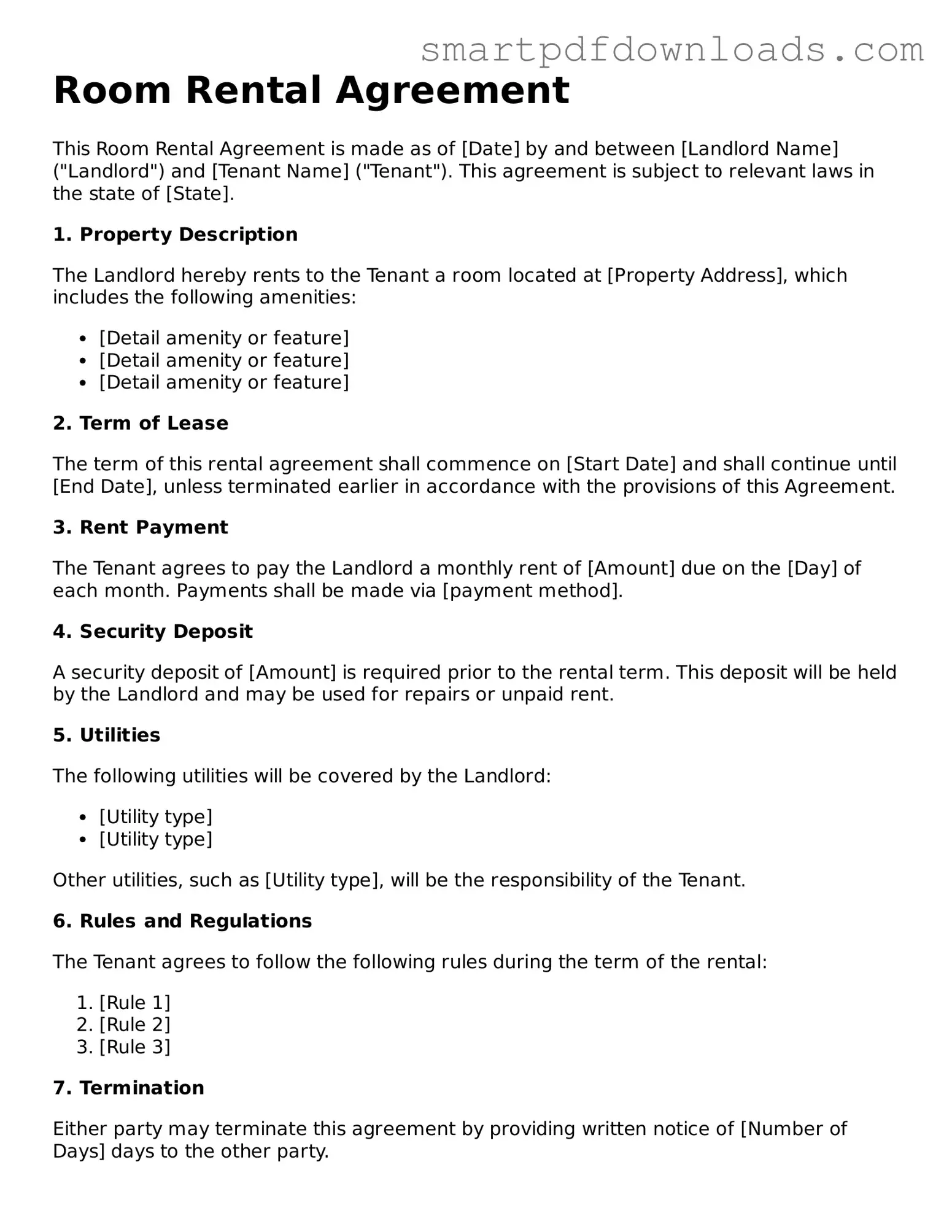Room Rental Agreement
This Room Rental Agreement is made as of [Date] by and between [Landlord Name] ("Landlord") and [Tenant Name] ("Tenant"). This agreement is subject to relevant laws in the state of [State].
1. Property Description
The Landlord hereby rents to the Tenant a room located at [Property Address], which includes the following amenities:
- [Detail amenity or feature]
- [Detail amenity or feature]
- [Detail amenity or feature]
2. Term of Lease
The term of this rental agreement shall commence on [Start Date] and shall continue until [End Date], unless terminated earlier in accordance with the provisions of this Agreement.
3. Rent Payment
The Tenant agrees to pay the Landlord a monthly rent of [Amount] due on the [Day] of each month. Payments shall be made via [payment method].
4. Security Deposit
A security deposit of [Amount] is required prior to the rental term. This deposit will be held by the Landlord and may be used for repairs or unpaid rent.
5. Utilities
The following utilities will be covered by the Landlord:
- [Utility type]
- [Utility type]
Other utilities, such as [Utility type], will be the responsibility of the Tenant.
6. Rules and Regulations
The Tenant agrees to follow the following rules during the term of the rental:
- [Rule 1]
- [Rule 2]
- [Rule 3]
7. Termination
Either party may terminate this agreement by providing written notice of [Number of Days] days to the other party.
8. Governing Law
This Agreement shall be governed by and construed in accordance with the laws of the state of [State].
9. Signatures
By signing below, the parties agree to the terms of this Room Rental Agreement:
_________________________
[Landlord Name], Landlord
_________________________
[Tenant Name], Tenant
Date: ________________
